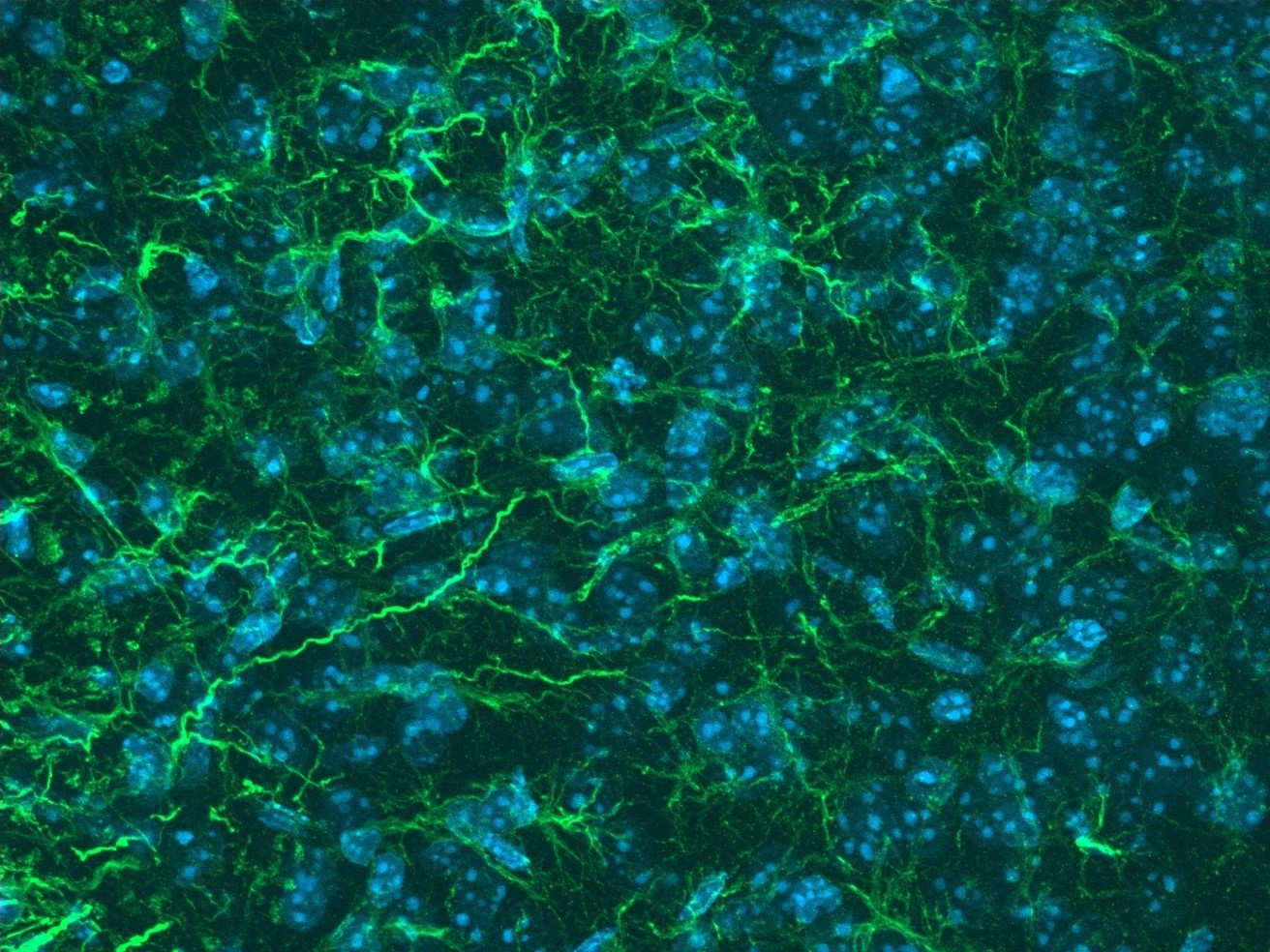Based at the University of St Andrews since 2007, New Zealand born Professor Gareth Miles’ research is focused on motor control – the spinal circuits and neurons that control walking.
“I’ve always believed that we need to understand how healthy neurons work, as well as why they stop working in MND,” he says. “We need to understand more about how the nervous system works to understand how to fix it when it’s going wrong.”
Biography
I grew up in New Zealand and always thought I’d end up working as a vet. But while I was studying animal and human physiology at university, I realised neuroscience was the thing for me.
I did my PhD in a lab with a guy called Dr Greg Funk – I always thought that was the best name – studying motor control and how the nervous system controls movement. We were looking at how networks of neurons in the brain stem control breathing.

Professor Miles and his team are using specialist technology to study motor neurones grown from stem cells, shown here under the microscope.
That was where I first got involved with MND. We were looking at why some motor neurons are affected in the disease, but others aren’t.
I’ve come a long way since then – not just moving from the southern hemisphere to the north (I’ve been in St Andrews since 2007), but shifting my research focus from the brain stem to the spinal cord.
Function first
My lab is now focused on the circuits and neurons inside the spine that control walking. Other labs look at things inside neurons, genes and very specific proteins inside the cell. But for me, the focus has always been on function.
I’ve always believed in splitting our work between looking at the basic science – how these neurons work normally – as well as what changes in MND. We need to understand more about how the nervous system works to understand how to fix it when it’s going wrong. That’s why we’re using so many different models – animal models, stem cells and even brain tissue. It’s a unique approach.

Professor Miles and his team are investigating these cells, called glia, which are known to cause damage to motor neurones.
The MND Association is funding some of the work on this at the moment. We’ve been studying synapses – the connections between neurons – trying to map out what they look like in different parts of a healthy spinal cord, and whether specialised support cells, called glial cells, influence this synapse map.
We’ve found some interesting differences across age and development and now we’re using that to look at the idea that some of the connections may be changing quite early on in the disease.
Learning to lead
It’s an interesting time for me now. I became head of the university’s School of Psychology and Neuroscience eighteen months ago. It’s fun, but I’m managing 40 academics and the rest of the school – it’s harder for me to spend time in the lab, which means I’m loving the science more than ever.

Professor Miles with his team in the lab at the University of St Andrews, Scotland.
I just love being in the lab. Even now, it’s amazing for me to go in and see someone recording from a neuron. We’ve got a good team of people in the lab. There are thirteen of us altogether and we all get on really well; I’ve always found it important that people get on and you do some social things together. We’ve had some cool science come about because of it.

Professor Miles established his lab at the University of St Andrews in 2011 and now has a team of 13.
Collaboration is really important. We also get together with five of the other labs at the university that are interested in motor control. We meet once a week for someone to present a research article or some of their work. That normally leads to a post-talk visit to the pub.
A couple of years ago, two students from different groups had been chatting and they ended up devising their own project and publishing a paper on it. You’ve got to create an environment where people can talk to each other.
A huge responsibility
I feel a massive sense of responsibility when I speak to people affected by MND. It’s great that they get in touch, but it’s tough at the same time. You need to be honest and realistic. I’m not a clinician, or someone who designs drugs. I’m just looking for answers – hopefully, what we find will be passed on to someone who can make a drug. It’s a massive worldwide effort, and as an MND Association supporter, you’re a key part of it. Without you, we’re not going anywhere.

